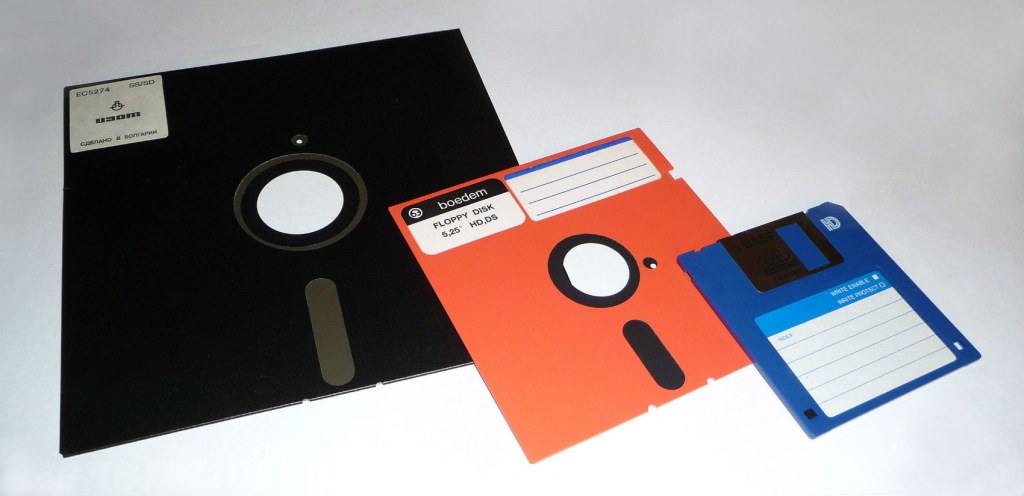Revolutionary Technological Innovation In The 1970s: Unleashing The Power Of The Past To Shape The Future!
Technological Innovation in the 1970s
Introduction
Dear Readers,
1 Picture Gallery: Revolutionary Technological Innovation In The 1970s: Unleashing The Power Of The Past To Shape The Future!

Welcome to this informative article on technological innovation in the 1970s. In this era, the world witnessed remarkable advancements in various fields, leading to significant changes in society. This article aims to provide you with a comprehensive overview of the technological breakthroughs that took place during this time. So, let’s dive into the fascinating world of the 1970s and discover the incredible inventions that shaped our modern lives.
What was Technological Innovation in the 1970s?

Image Source: pastemagazine.com
🔍 Technological innovation in the 1970s refers to the development and introduction of groundbreaking inventions and advancements in various fields, including electronics, communications, transportation, and healthcare.
During this period, scientists, engineers, and inventors worked tirelessly to push the boundaries of what was possible, resulting in revolutionary technologies that continue to impact our lives today.
Who were the Key Innovators?
👥 Many visionaries and innovators played crucial roles in the technological advancements of the 1970s. Some notable figures include:
1. Steve Jobs and Steve Wozniak: Founders of Apple, they introduced the Apple II, a personal computer that revolutionized the industry.
2. Bill Gates and Paul Allen: Co-founders of Microsoft, they developed the MS-DOS operating system, laying the foundation for future advancements in personal computing.
3. Ray Tomlinson: He invented email, a communication tool that transformed the way people connect and share information.
4. Robert Metcalfe: The co-inventor of Ethernet, a technology that enabled the creation of local area networks (LANs) and connected computers.
5. Douglas Engelbart: He developed the computer mouse, which revolutionized human-computer interaction and became an essential input device.
These innovators, among many others, left indelible marks on the technological landscape of the 1970s and beyond.
When did Technological Innovation in the 1970s Occur?
⌛ Technological innovation in the 1970s took place throughout the entire decade. However, some key advancements occurred during specific years:
1. 1971: The first microprocessor, the Intel 4004, was introduced, paving the way for the development of smaller and more powerful computers.
2. 1973: The first mobile phone call was made by Martin Cooper, a Motorola engineer, marking the beginning of the mobile communications revolution.
3. 1975: The Altair 8800, the first commercially successful personal computer, was released, sparking the rise of the PC industry.
4. 1977: The Apple II, the first consumer-friendly personal computer, was launched, making computing accessible to a broader audience.
These milestones and other significant events in the 1970s contributed to the rapid pace of technological innovation during this era.
Where did Technological Innovation in the 1970s Take Place?
🌍 Technological innovation in the 1970s took place on a global scale. The United States, with its thriving tech industry, was at the forefront of many advancements. Silicon Valley, in particular, became a hub for innovation and entrepreneurship.
However, other countries such as Japan, Germany, and the United Kingdom also made significant contributions to technological progress during this time. The collaborative efforts of researchers, engineers, and inventors from around the world led to a truly global wave of innovations.
Why was Technological Innovation in the 1970s Important?
🌟 Technological innovation in the 1970s played a pivotal role in shaping the modern world we live in today. Here are some key reasons why it was important:
1. Advancements in computing: The development of personal computers and microprocessors laid the foundation for the digital revolution, changing the way we work, communicate, and access information.
2. Communication breakthroughs: Innovations such as email and mobile phones revolutionized communication, making it faster, more accessible, and more convenient.
3. Healthcare advancements: Technologies like magnetic resonance imaging (MRI) and CT scans became essential tools in diagnosing and treating medical conditions, improving patient care.
4. Environmental awareness: The 1970s saw increased awareness of environmental issues, leading to innovations in renewable energy technologies and sustainable practices.
5. Transportation improvements: The automotive industry introduced fuel-efficient cars, catalytic converters, and advancements in safety features, making transportation safer and more environmentally friendly.
These innovations had a profound impact on society, economy, and various industries, setting the stage for further advancements in the decades to come.
How did Technological Innovation in the 1970s Happen?
💡 Technological innovation in the 1970s was driven by a combination of factors:
1. Increased research and development: Companies and organizations invested heavily in research and development, fostering a culture of innovation.
2. Collaboration and knowledge sharing: The exchange of ideas and collaboration between scientists, engineers, and inventors from different fields and countries accelerated the pace of innovation.
3. Technological infrastructure: The development of essential technologies, such as microprocessors and networking protocols, provided the building blocks for further advancements.
4. Market demand: The growing demand for more efficient, convenient, and accessible technologies drove innovators to create solutions that catered to consumers’ needs.
Through these various mechanisms, the 1970s witnessed a remarkable surge in technological innovation that continues to shape our world today.
Advantages and Disadvantages of Technological Innovation in the 1970s
Advantages:
👍 Technological innovation in the 1970s brought numerous benefits to society:
1. Improved productivity: Automation and computerization increased productivity in industries, leading to economic growth.
2. Enhanced communication: The advent of email and mobile phones revolutionized communication, making it faster and more accessible.
3. Advances in healthcare: Technologies like MRI and CT scans improved medical diagnosis and treatment, saving lives.
4. Energy efficiency: Innovations in renewable energy contributed to energy conservation and reduced reliance on fossil fuels.
Disadvantages:
👎 However, technological innovation in the 1970s also had its drawbacks:
1. Job displacement: Automation and computerization led to job losses in certain industries, impacting the livelihoods of many workers.
2. Privacy concerns: The increased use of technology raised concerns about privacy and data security.
3. Environmental impact: While there were advancements in renewable energy, there were also negative environmental consequences associated with technological progress.
4. Technological divide: Access to new technologies was not evenly distributed, creating a digital divide between different communities and regions.
It is important to weigh both the advantages and disadvantages of technological innovation to ensure its responsible and ethical use.
Frequently Asked Questions (FAQs)
1. Did the internet exist in the 1970s?
🔍 No, the internet as we know it today did not exist in the 1970s. However, the foundation for the internet was laid during this decade with the development of ARPANET, a precursor to the modern internet.
2. What were some popular consumer products in the 1970s?
🏬 Popular consumer products in the 1970s included the Sony Walkman, Atari game consoles, Betamax video players, and the Rubik’s Cube.
3. Were there any advancements in space exploration during the 1970s?
🚀 Yes, the 1970s witnessed significant advancements in space exploration. NASA’s Apollo program successfully landed humans on the moon, and space probes were sent to explore other planets in our solar system.
4. Did the 1970s see any breakthroughs in renewable energy?
⚡ Yes, the 1970s saw the emergence of renewable energy technologies such as solar panels and wind turbines. These advancements laid the groundwork for the development of clean energy solutions.
5. What impact did technological innovation in the 1970s have on music?
🎵 Technological innovation in the 1970s had a significant impact on the music industry. The introduction of synthesizers, drum machines, and recording advancements revolutionized music production and led to new genres and sounds.
Conclusion
In conclusion, technological innovation in the 1970s was a transformative period in human history. The remarkable advancements in various fields laid the foundation for the digital revolution and shaped our modern lives. While there were advantages and disadvantages to these innovations, it is clear that the world we live in today owes much to the visionaries and inventors of the 1970s. Let us appreciate their contributions and continue to harness technology responsibly for the betterment of society.
Final Remarks
Dear Friends,
Thank you for joining us on this exploration of technological innovation in the 1970s. It is essential to reflect on the past to understand and appreciate the present. While the 1970s brought us incredible advancements, it is important to recognize that progress comes with responsibilities. Let us embrace technology with a conscious mindset, always striving for ethical and sustainable practices. Together, we can shape a future that benefits all of humanity.
This post topic: Technology Innovation

